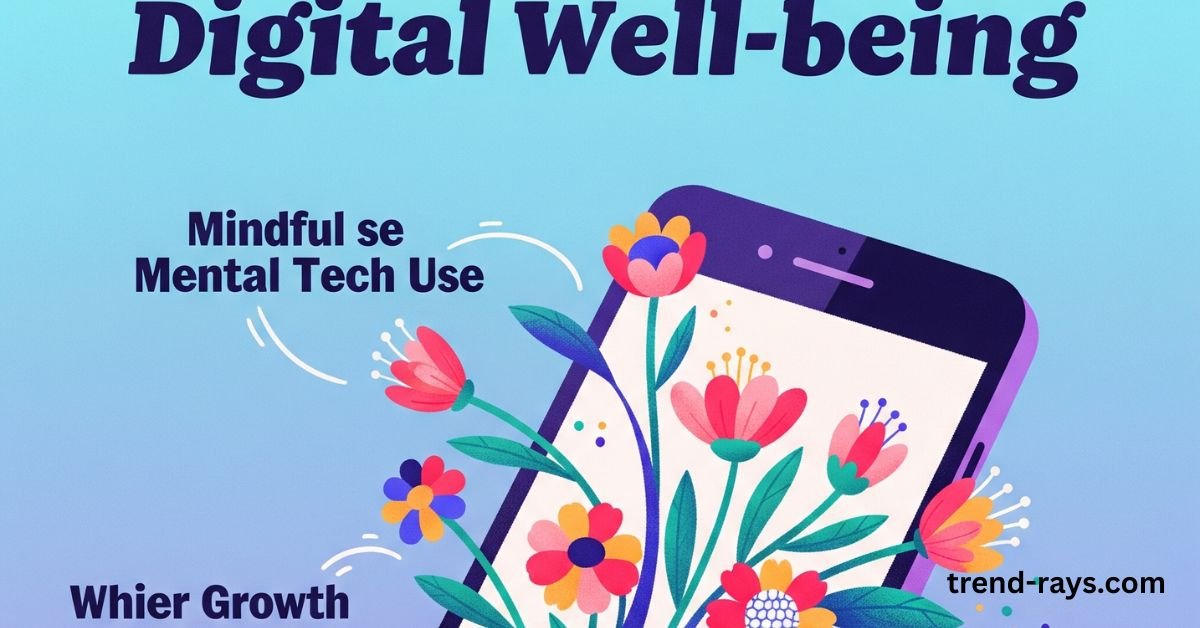In an increasingly connected world, managing screen time has become a significant challenge for many. While digital devices offer immense benefits, excessive use can negatively impact our well-being, sleep, relationships, and even expose us to online risks. This comprehensive guide explores various approaches to help you gain control over your digital habits, ranging from dedicated apps and built-in device features to crucial aspects of digital literacy, online safety, and mindful behavioral changes.
Understanding Screen Time Management Apps
Third-party screen time management applications offer diverse functionalities to help curb digital overconsumption. These apps often fall into categories such as:
- Intentional Delay Apps: These apps introduce a pause before you open a distracting application, prompting you to reconsider your usage. An example mentioned in a CNET article is One Sec, which aims for a balance between intentional use and non-restrictiveness.
- App Blocking Apps: These tools can completely block access to specific applications or websites for designated periods, helping you avoid temptations during focus times.
- Timers: Many apps allow you to set daily time limits for particular apps or categories, alerting you when your allotted time is nearly up.
Benefits of Screen Time Apps:
- Improved Mental Health: By reducing exposure to content that might trigger anxiety or depression, these apps can contribute to a healthier mindset.
- Reduced Distractions: They help in creating focused environments, especially beneficial for work or study.
- Increased Time for Meaningful Activities: Limiting screen time frees up hours for hobbies, physical activity, and in-person social interactions.
- Better Sleep Habits: Avoiding screens before bed, especially due to blue light emission, can significantly improve sleep quality.
Potential Drawbacks and Data Privacy Concerns:
While beneficial, it’s crucial to be aware of the potential downsides. Screen time management apps, especially parental control apps, often require significant access to your device data, including app usage, website visits, and sometimes even messages. This raises data privacy concerns. Before downloading any third-party app, always:
- Read the Privacy Policy: Understand what data the company collects, how it’s used, and if it’s shared or sold.
- Check App Store Descriptions: Look for information on data tracking or collection practices directly from the app’s listing.
As noted by cybersecurity experts, even apps claiming to use local VPNs for privacy might still be collecting and potentially sharing your data. User intention remains key; these apps are tools, not a substitute for developing self-control.
Leveraging Built-in Device Settings for Screen Time Management
Before resorting to third-party apps, explore the robust screen time management features integrated into most modern smartphones:
- iOS (Screen Time):
- App & Website Activity: Monitor your usage, see which apps consume most of your time, and track how often you pick up your device.
- Downtime: Schedule periods when only essential apps and contacts are available. This is ideal for meals, bedtime, or family time.
- App Limits: Set daily time limits for app categories (e.g., Social Networking) or individual apps.
- Always Allowed: Specify apps and contacts that remain accessible even during Downtime.
- Content & Privacy Restrictions: For parental control, these settings allow you to filter explicit content, limit purchases, and restrict certain app functionalities.
- Screen Time Passcode: Secure your settings to prevent easy bypass, especially for children.
- Android (Digital Wellbeing & Parental Controls):
- Dashboard: View your daily device usage, app usage, and notification frequency.
- App Timers: Set daily limits for individual apps. Once the limit is reached, the app pauses for the rest of the day.
- Bedtime Mode: Automate grayscale, silence notifications (Do Not Disturb), and dim the wallpaper to encourage winding down before sleep.
- Focus Mode: Pause distracting apps with a single tap, allowing you to concentrate on tasks without interruptions.
- Parental Controls (Family Link): For children’s devices, you can set daily limits, block specific apps, schedule downtime, and monitor activity.
These built-in features offer a good starting point for managing screen time without the added privacy considerations of third-party applications.
Beyond Limits: Digital Literacy, Online Safety, and Communication
Effective screen time management extends beyond simply limiting usage; it involves understanding the digital environment, protecting yourself, and fostering open dialogue.
- Impact on Mental Health: Beyond General Use: While excessive screen time generally affects mental well-being, research highlights specific impacts from social media. Limiting social media use to around 30 minutes per day has been shown to significantly improve well-being. The highly curated content often found on social platforms can promote unrealistic expectations and encourage consumerism, impacting self-esteem and satisfaction.
- Understanding the Link to Cyberbullying: Excessive screen time, particularly among younger users, has a complex link to cyberbullying. Increased online presence can heighten the risk of becoming a victim or even inadvertently participating in cyberbullying. Being mindful of time spent online and fostering a safe online environment are crucial protective measures.
- Promoting Digital Literacy: Teaching digital literacy is fundamental. This involves educating individuals, especially children, about:
- Understanding Online Risks: Recognizing phishing attempts, scams, and dangerous content.
- Practicing Safe Online Behavior: Using strong passwords, being cautious about sharing personal information, and understanding privacy settings.
- Being Respectful Online: The importance of kindness, empathy, and responsible communication in digital interactions.
- Understanding One’s Digital Footprint: Realizing that online actions and shared information leave a lasting trace.
- Fostering Open Communication: Creating a safe and non-judgmental space for discussing online experiences is vital. Encourage individuals to share what they encounter online, report suspicious interactions, and ask questions without fear of punishment. This open dialogue helps address issues proactively and builds trust.
- Creating a Family Online Safety Plan: For households with children, a detailed family online safety plan can provide structure and clarity. This plan should include:
- Clear rules for online behavior.
- Specific screen time guidelines.
- Procedures for reporting suspicious or uncomfortable online interactions.
- Defined consequences for violations of the plan.
Effective Strategies Beyond Apps and Settings
While apps and device settings provide structured control, cultivating mindful habits can significantly reduce screen time and improve your digital well-being. Consider these “natural” methods:
- Track Your Usage: Begin by understanding your current screen habits. Many devices offer built-in tracking, or you can use simple manual logging to identify your biggest time sinks.
- Turn Off Notifications: Constant pings and buzzes pull you back to your device. Disable unnecessary notifications to minimize distractions.
- Create Screen-Free Zones and Times: Designate specific areas (e.g., dining table, bedroom) or periods (e.g., meals, an hour before bed) as strictly no-screen.
- Make Your Phone Less Appealing: Switch your phone to grayscale mode, lower brightness, or set it to silent to reduce its allure.
- Schedule Screen-Free Breaks: During work or study, set alarms to remind yourself to take short breaks away from all screens.
- Replace Screen Time with Engaging Activities: Fill the void left by reduced screen time with hobbies, reading physical books, outdoor activities, exercise, or in-person social interactions.
- Set Clear Work Boundaries: If screens are integral to your work, establish fixed working hours and turn off work-related notifications outside those times to prevent creep into personal life.
- Be a Role Model: For parents, demonstrating healthy screen habits is crucial as children often mimic adult behavior.
- Communicate and Involve Others: Discuss screen time goals with family or friends to build a support system and potentially make changes together.
Choosing the Right Approach
The most effective screen time management strategy is one that aligns with your lifestyle and commitment.
- If you need a structured, enforced approach, third-party apps with features like hard blocking or intentional delays might be beneficial, provided you are comfortable with their data privacy practices.
- For a balanced and integrated solution, leveraging your device’s built-in Screen Time (iOS) or Digital Wellbeing (Android) features offers comprehensive control with less privacy overhead.
- For those seeking long-term behavioral change, focusing on mindful habits, screen-free zones, and alternative activities can lead to sustainable results without relying heavily on technology.
Ultimately, the goal is not to eliminate screens entirely, but to foster a healthier, more intentional relationship with your devices, allowing you to reclaim time and focus for what truly matters in your life, while also ensuring your safety and well-being in the digital landscape.

